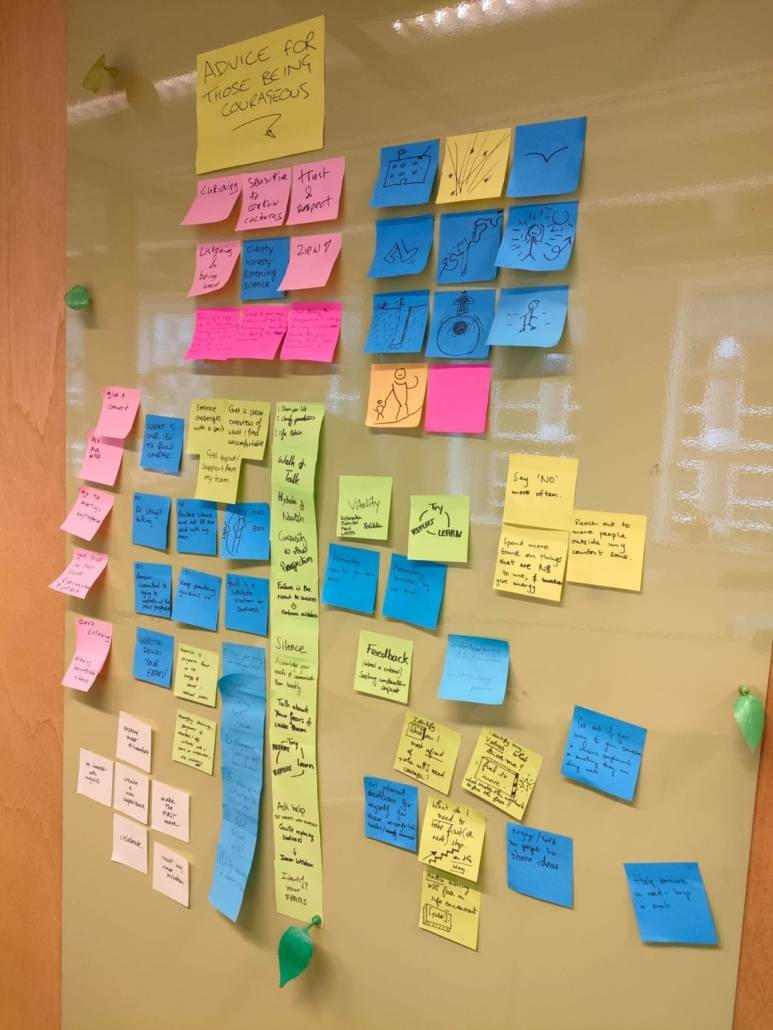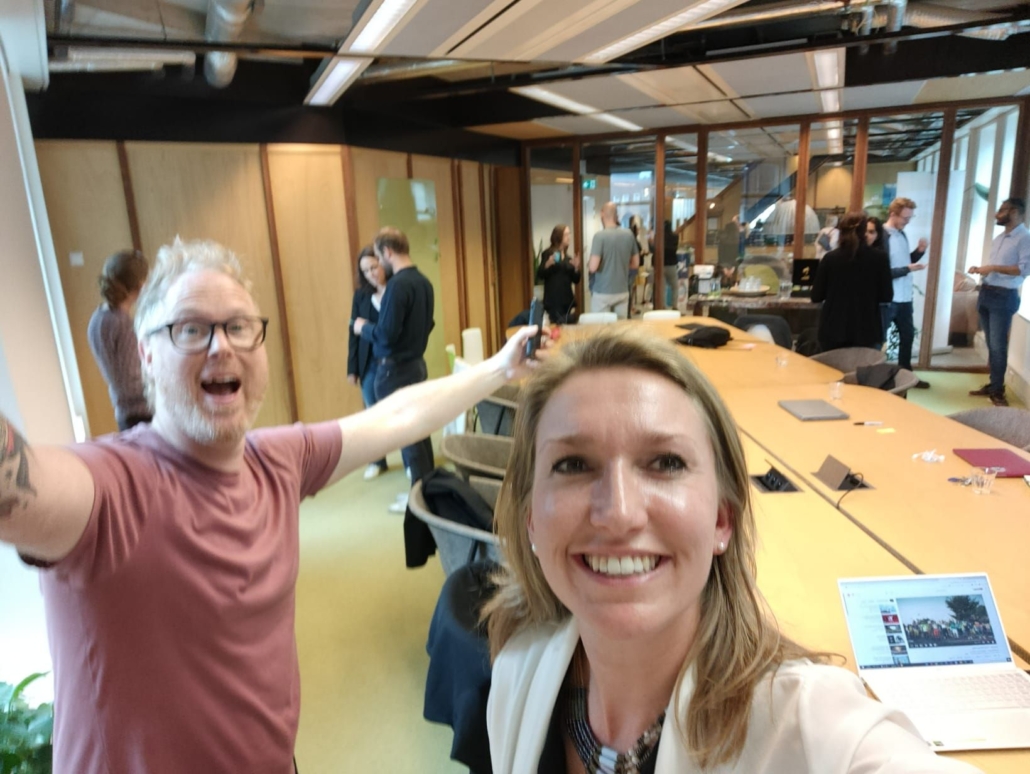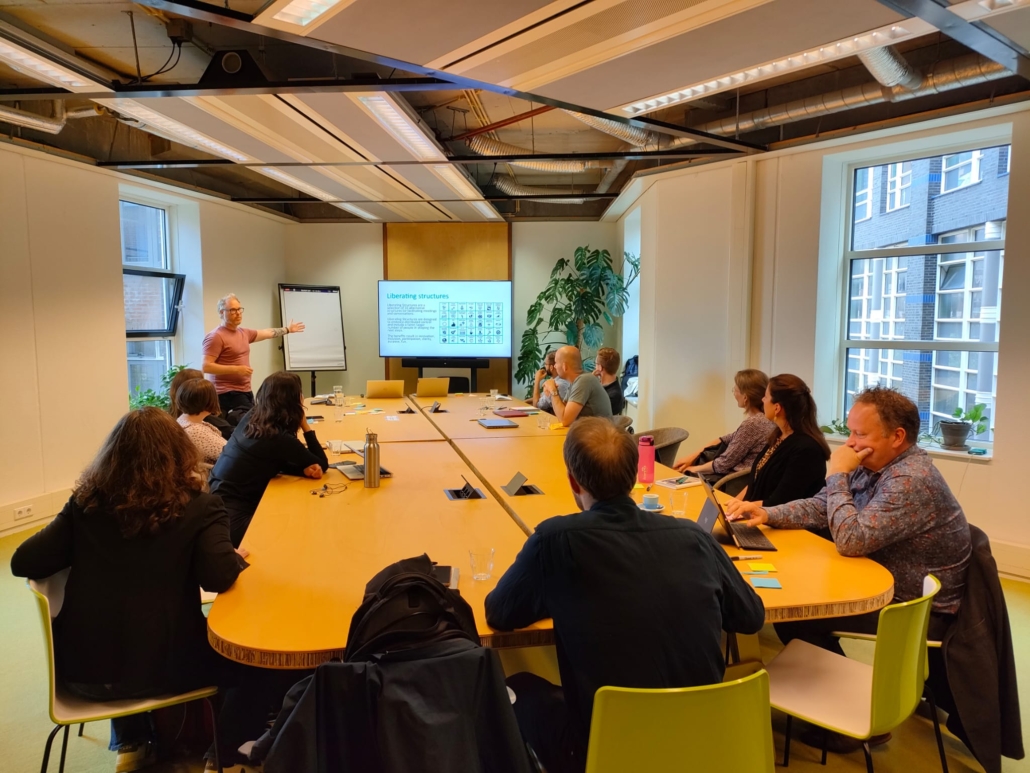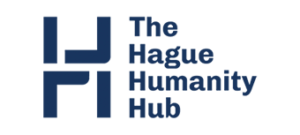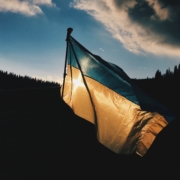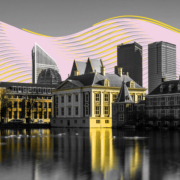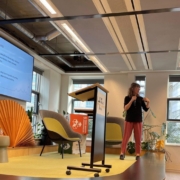“Facilitating Uncomfortable Conversations”
Peer-to-peer groups on “Facilitation” at the Humanity Hub rotate a new host every few weeks to introduce a topic of mutual interest and learning. In our most recent edition, hosted by Kelly Buis and Matt Barnaby from ImpactBasis, a group of Humanity Hub members explored the topic of ‘facilitating uncomfortable conversations’.
Here, Kelly and Matt reflect on training your courage muscle, and explore alternative structures to facilitation called liberating structures.
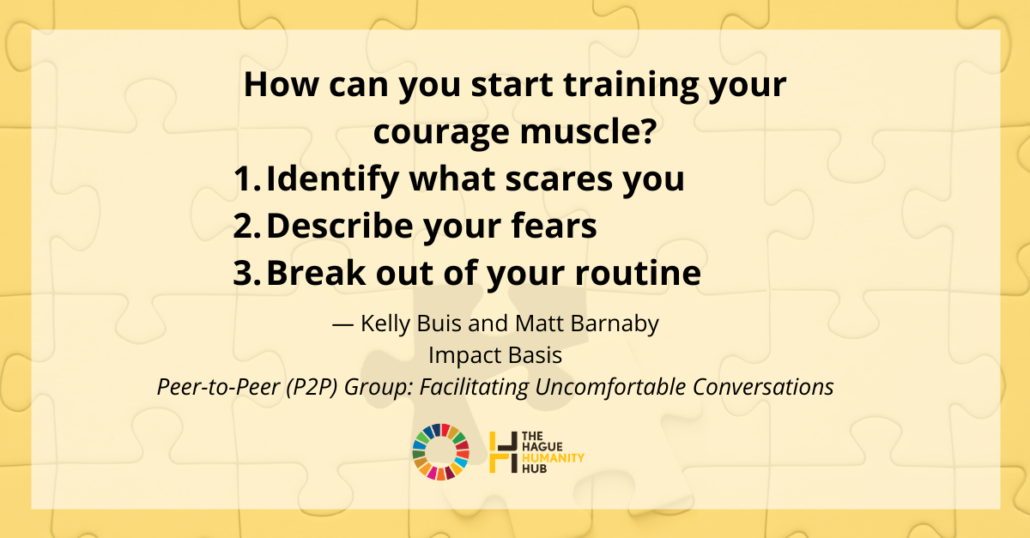
What a pleasure it was to host a session as ImpactBasis for the peer-to-peer facilitation working group. During our initial brainstorm about the content, our interests quickly aligned. Kelly said ‘courage’, Matt answered ‘liberating structures’. And our session idea was born.
We designed this session in memory of Alex Brenninkmeijer, the former Dutch Ombudsman, who opened our eyes to the idea that courage equals engaging in difficult conversations. Liberating Structures is a toolkit that can help facilitators to guide these conversations.
Introducing liberating structures
What are liberating structures (LS), you might ask? We all have been part of presentations, open discussions, managed discussions, status reports and brainstorming sessions. Liberating Structures are a selection of 33 alternative ways to facilitate meetings and conversations. They are designed to embrace distributed control and can include a fairer and larger number of people in giving input and shaping the next steps.
Its advocates argue that LS lead to more innovation, inclusion, participation, clarity, purpose and fun. The good news? They are publicly available to everyone to use, so you can get started right after reading this.

Diving into 3 liberating structures
Let’s zoom in on the liberating structures we’ve used. To warm up the participants, we started off with Impromptu Networking. Following a drawing exercise around the question ‘When you are at your most courageous, it looks like what?’, participants were asked to pair up with a different person during several rounds to reflect on the question posed. This LS has as its purpose to initiate participation right from the start, helps (shy) people warm up and allows for stories to deepen as they are repeated in several rounds, to name just a few of its objectives.
To dive into the topic of uncomfortable conversations and what is helpful in engaging with these we introduced, 1-2-4-all. The name of this LS already gives it away a bit: individual reflection is followed by sharing in pairs, after which two pairs are merged into a four to discuss the question at hand. The final step is for all ideas to be shared in plenary. This LS ensures that every individual is engaged from the start, avoids that only the dominant voices are able to share their ideas and expands diversity of input. At the same time, it’s a natural way to build towards consensus or shared understanding.
This brought us to the question of how we can train our courage muscles. 15% solutions helps us in uncovering that question. This LS helps to bring solutions to the fore that you as an individual can start experimenting with right away. The idea is to come up with a number of small actions within the power, freedom and resources you have to create momentum for change to deal with the challenge you are facing. Its purpose? Moving away from powerlessness, reveal bottom-up solutions and have people share actionable ideas and help one another.
Training our courage muscle
Whereas this session was meant for facilitators to participate in Liberating Structures to understand what it’s like as a participant, let’s also dedicate some final words to the ‘courage’ part of the session. Here are some initial steps everyone can take to start training their courage muscle:
🔹 Identify what scares you
What are healthy and unhealthy fears you have? Where might they come from?
🔹 Describe your fears
Write them down, and speak about it with a friend or colleague you feel comfortable with about them.
🔹Break out of your routine
Do you ever cycle/walk/drive to your destination using a different route? It’s the small changes to your routine that allow you to experience something unfamiliar. A great way to practice discomfort without taking any real risk.
Knowing that small wins can help you prepare for the big courageous leaps, what are the small courageous actions you will take today?
